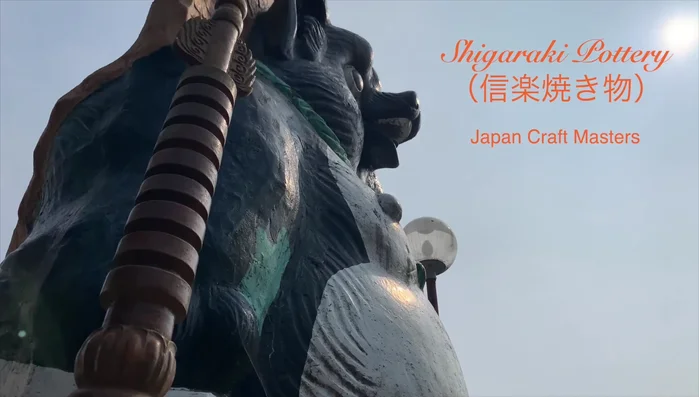Nestled in the historic town of Shigaraki, Japan, lies a centuries-old pottery tradition: Shigaraki-yaki. Famous for its whimsical tanuki figurines, this unique style encompasses a broad spectrum of pottery, from everyday teaware to grand, decorative pieces. This article delves into the heart of Shigaraki-yaki, offering a firsthand account of a transformative experience learning from a master potter.Join us on a journey to the workshop of Kiyomi Yamaguchi, a skilled artisan who has dedicated nearly 50 years to perfecting her craft. Through hands-on participation, we’ll explore the intricate process of creating Shigaraki-yaki pottery, from the initial shaping to the crucial firing process. Discover the dedication, artistry, and profound spiritual connection that lies at the heart of this ancient art form, as we uncover the secrets behind the rich colors, textures, and enduring appeal of Shigaraki-yaki.
Pros And Cons
- Generations-old pottery making tradition.
- Variety of items produced, including practical goods (teapots, cups, bowls) and decorative items (tanuki figures).
Read more: 9 Exquisite Japanese Ceramic Coffee Cups
A Journey to Shigaraki
Shigaraki, a town steeped in tradition, is renowned for its centuries-old pottery, Shigaraki-yaki. This unique style is instantly recognizable for its whimsical tanuki (raccoon dog) figurines, found adorning shops and homes throughout Japan. Beyond these charming characters, Shigaraki-yaki encompasses a diverse range of pottery, from practical teaware to elaborate, oversized pieces.

The pottery encompasses a wide variety of forms, including teapots, cups, bowls, and decorative items. The craftsmanship ranges from simple, functional pieces to incredibly detailed and extravagant creations, though many of the larger pieces are becoming less common today. My journey begins with a motorcycle ride to meet a master potter.

Meeting Kiyomi Yamaguchi
My destination is the workshop of Kiyomi Yamaguchi, a skilled potter who has dedicated nearly 50 years to her craft. I arrive on my motorcycle, accompanied by friends Takeshi and Shoko. They join me on this adventure. Kiyomi-san welcomes us warmly, already immersed in her daily work.
The experience of working alongside Kiyomi-san promised insight into the intricacies of Shigaraki-yaki. We are privileged to witness her skill in crafting beautiful and functional pieces. The collaborative approach enhanced our understanding, allowing us to participate directly in the process.
Hands-on Experience
Under Kiyomi-san's patient guidance, Takeshi and Shoko demonstrate their pottery skills, showcasing their prior experience. It was my turn to try, even though my attempt was far from perfect, the experience was invaluable. We learned about the steps involved, from forming the base to delicately shaping the final form.

The entire process was remarkably hands-on. We were not simply passive observers; we actively participated in the creation of our own pieces. The imperfections only added to the charm of our individual efforts. It truly emphasized the level of skill and dedication required to achieve mastery in this ancient art form.
The Firing and Finishing
After initial shaping, the pottery undergoes a crucial step: firing. Kiyomi-san expertly demonstrates this process in her outdoor kiln. The transformation of the pieces as they are exposed to high temperatures was both fascinating and awe-inspiring.

The firing process brings out the rich colors and textures that characterize Shigaraki-yaki. The final product, while imperfect, reflected both the craft's unique style and the individual's participation in its creation. The collaborative approach fostered a deep appreciation for Kiyomi-san's mastery of Shigaraki-yaki.
Wisdom from a Master
Kiyomi-san's journey as a potter spans almost 50 years, starting as a disciple under a master potter. She shared insightful advice, emphasizing the importance of finding a skilled mentor and dedicating oneself to continuous learning. This resonated deeply with the collaborative spirit and shared learning that had infused our visit.

Her words encapsulated not only the technical aspects of pottery-making, but also the profound spiritual connection that underpins the craft. Her advice highlighted the value of patience, perseverance, and the continuous pursuit of improvement – essential qualities for any aspiring craftsperson.
Conclusion
My experience in Shigaraki revealed more than just the techniques of pottery; it showcased the dedication and artistry behind Shigaraki-yaki. The hands-on experience, coupled with Kiyomi-san's wisdom, imparted a profound appreciation for traditional Japanese craftsmanship.
The journey provided not only valuable insights into Shigaraki-yaki but also a deeper understanding of the cultural and personal significance of this unique art form. It was a privilege to witness firsthand the dedication, skill, and passion of a master potter, demonstrating the enduring appeal of time-honored traditions.
